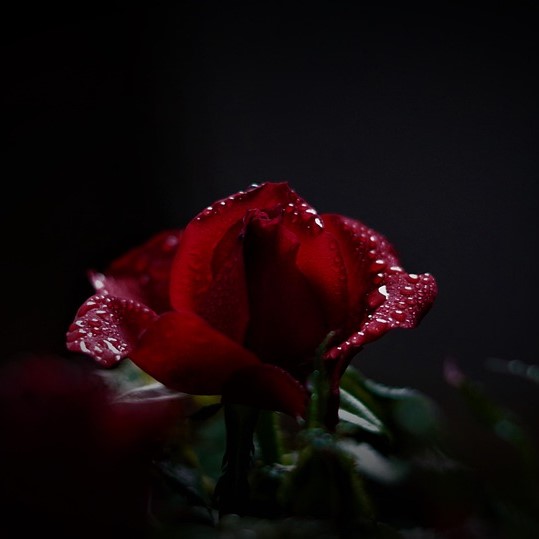
Narrated in the first person by an unnamed narrator, The Woman’s Rose by Olive Schreiner story explores the themes of appearance, jealousy, and feminism. The narrator recollects her meeting with a beautiful girl when she was younger. There’s a sense of rivalry between them but in truth, both women admire each other. The narrator is touched by a kind gesture of that girl that makes her realize that friendship between women is very valuable.
The Woman’s Rose | Summary
The narrator talks about a box she has in her possession, where she keeps souvenirs. She says that many women have such boxes but nobody has “her rose”. There’s a twenty-year-old old rose in her box which she never threw away. The rose reminds her of a girl she met many years ago and whenever she has doubts about her faith in women; the smell of the rose makes her believe that “there will be spring”.
There were other flowers in the box too, white acacia flowers given to her by an old admirer but she threw them away. However, the rose is still there. The narrator recalls her past, when she was fifteen she visits a village. In that village, there is a girl and she is the beauty of the town. The town is mostly populated by single men and everyone wants her. They give her flowers, offer her things and even propose to marry her. They fight among themselves over that girl.
But when the narrator comes to the village the power shifts to her. All the men go crazy over her, the narrator believes that she is not as beautiful as the other girl but since she’s younger and new the men find her attractive. The narrator admires the beauty of the other girl; she has “dreamy blue eyes, wavy light hair, and full rather heavy lips”. She enjoys all the attention she receives from those men but she also feels bad that the other girl is being ignored. She despises those men for their behavior. The narrator believes that the girl must hate her and wish her dead. The girl doesn’t know that the narrator stands up for her in front of a few men who insult her or those who abandoned her. The girl and the narrator hardly interact, there’s a rivalry that makes it awkward.
When the time comes for the narrator to leave the village, there’s a party arranged in her honor. There’s only one beautiful white rose in the village which is promised to the fair-haired girl. At the party, the girl is wearing the white rose on her breast but when the narrator comes she fastens the rose on her hair. The girl speaks to the narrator for the first time. She says that the dark hair of the narrator compliments the rose better. The narrator is grateful to receive such a nice gesture; she admits to the other girl that she finds her very beautiful. The narrator leaves and they never see each other again. There are rumors that the girl got married and moved to America. The narrator again repeats how the smell of the withered rose reminds her that “spring cannot fail us”.
The Woman’s Rose | Analysis
One significant thing to notice is that the rose is the most cherished possession in the box the narrator keeps. It symbolizes that the connection she felt with the girl was very important to her. The white color symbolizes purity thus the gesture of that girl was a very pure experience for the narrator. The girls were connected in their rivalry and by the other girl’s act of giving the rose, their connection became a symbol of friendship. They were competitors for the affection of men but that girl still chose a friendly gesture, the narrator thought the girl hated her but that was not the case. This made the narrator realize that women can stick together and be each other’s companions. When she says “spring cannot fail us” the narrator believes there is hope for a better future. Spring is a sign of hope and renewal. The author wants to highlight how society makes women compete with each other based on their appearance but all women don’t view themselves as rivals. Women can be friends and this can create a better future for them.
The story also highlights that the men judged these girls based on appearance. They treat women as objects or a toy, when the narrator arrives in the village it’s as if they had a new shiny toy to admire. They tried to win the women by using materialistic things. They took pride in their attempts to court these women however they were not sincere in their admiration. The way they treated the other girl was very unfair. The narrator did not like these men much; she disliked the way they behaved. She could tell that they were fickle and unfaithful. They looked for beauty in a girl and not character, this emphasizes how their thinking was shallow. There also arose a lot of jealousy between all those men which made them compete. The men were not in love with these girls; it was all like a game to them. They abandoned one girl when a new girl came along. This absurd behavior made women feel insecure and unwanted. As a girl, the narrator felt a sort of authority by being able to reject men who approached her. Men lined up in front of her and offered her things but she did not like them.
The narrator also mentions that in the box there were other flowers from a man that she got one “sultry summer” but she threw them away a long time ago. She might have kept those flowers as a girlish vanity but as a grown woman she realized those pretentious suitors were not sincere in their adoration. The acacia flowers represent the shallow adoration of the men she encountered. Yet she kept the rose and despite so much time passing since she received the rose she still remembers that girl. The act of generosity by the girl gave the narrator hope that there’s good in women, even when they are competitors. She valued the rose more and it was more memorable for her.
The light and dark hair of the girls show that they stand on opposite ends. The narrator herself is jealous of that other girl and she thinks the other girl too hates her. They hardly talk and their meetings were awkward but in the end, it turned out that both women admired each other. The narrator admired the girl a lot and tried to fight men who abandoned her and insulted her. The narrator did not consider herself beautiful in comparison to the other girl. The way she describes the girl with “dreamy blue eyes”, “full lips” and her “smile with dimples” it’s obvious that she admired that girl a lot. It can also be observed that the narrator is perhaps even attracted to this girl.
The Woman’s Rose | About the author
Olive Schreiner (1855 –1920) was a South African writer. She is best admired for her novel “The Story of an African Farm” (1883) in which she explores the themes of agnosticism, existential independence, individualism, the professional aspirations of women, and the elemental nature of life on the colonial frontier. Her other notable works include “Trooper Peter Halkett of Mashonaland “(1897) and “Woman and Labour” (1911).


